Creating "It's A Small World"
|
To design an attraction, the Disney staff builds
detailed scale models to study audience movement and the guest's
eye-view of the entire adventure.
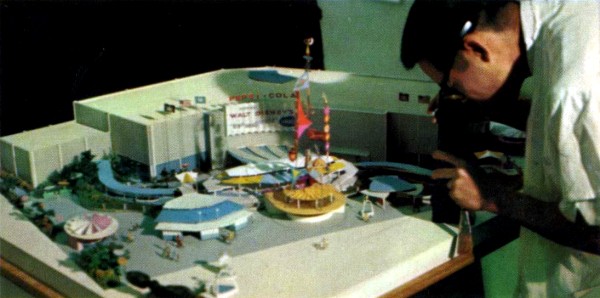 |
|
Walt Disney often refers to the diverse entertainment bearing
his name as a "team" accomplishment.
The creative imagination, and the special skills, of this
"team" have brought laughter and song, drama and adventure,
to family audiences in a wide variety of entertainment ... ranging
from motion pictures to television, and from Disneyland to the
New York World's Fair.
Many attractions have blended these talents in ways so unusual
that the entertainment you and your family see, the adventure
you participate in, may truly be called unique. "It's a
Small World" is such an attraction.
This adventure began when Pepsi-Cola asked Walt Disney to
create a salute to children and UNICEF, to premiere at the New
York World's Fair. The result is an international kaleidoscope:
a changing, colorful world.
To accomplish this "salute to all the world's children"
was a creative challenge, a symphony of many arts and crafts,
a harmonic blending of diverse skills. The enthusiasm and dedication
of many people made "It's a Small World" an entertaining
reality. Among them were artists, art directors, model makers,
engineers, musicians, costume designers, seamstresses, machinists,
special effects men, animators, sculptors, architects, draftsmen,
lighting experts, color stylists, sound specialists and many,
many more artisans and craftsmen.
It is to these dozens and dozens of individuals, the "Disney
team," that this book is dedicated. While it is impossible
to show each one, or even more than a few on these pages, the
photographs that follow are representative of the many people
who translated sketches and models into an exciting adventure.
Here, behind the scenes, is a small part of this "imagineering"
story ... depicting Walt Disney and his team creating "It's
a Small World."
|
|
More than 250 "toys," each an original
design, were hand-made for roles in this show. The "wild"
reindeer at right has tail that wiggles, head that rocks, and
eyes that roll.
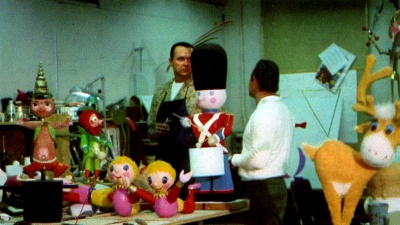 |
|
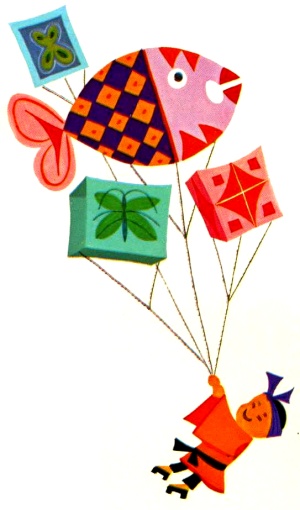 |
|
Model maker (right) and artist-craftsmen
turn sketch into tiny figures and stylized setting of Japan.
Models guide construction of the show.
|
|
|
The Toymakers
|
Once upon a time, in a little toy shop, 250 of the most original
children's toys ever hand-made were coming to life. With 195
pounds of "glitter" and 57 gross of jewels, 320 big
styrofoam blocks and 370 yards of braid, 28 dozen tassels and
five gallons of glue (per week), the toymakers carved and sanded
and painted everything from aerial acrobats to zany zebras.
Today the world's most unusual "toy shop" displays
its wares before an audience of millions - children, adults and
grandparents. Yet, not a single one of its laughing, twirling,
flying works of art is for sale.
Recognizing the value of contrast, Walt Disney cast two completely
different types of boys and girls as the stars of "It's
a Small World." One is the round-contoured child-like figure
that sings and dances attired in the beautiful costume of his
native land. The second is the rough-textured "toy"
dressed only in "flitter," feathers ... and even ostrich
fluff. Each is literally a hand-crafted original, a one-of-a-kind
design.
To make these animated, three-dimensional toys, the artisans
depleted the costume jewelry market of Southern California, obtaining
jewels, beads, crystal, sapphires and sequins. They shopped Los
Angeles' famous Olvera Street for authentic baskets and sombreros
of Mexico, and the stores of the city's Little Tokyo for colorful
paper balloons and plastic fish.
And if the show girls of America noted a sudden shortage of
exotic feathers, blame that on the "Small World" toymakers,
too. For children's "hair" and animal "fur,"
they glued on marabou, ostrich plumes and fluff, goose feathers
and pheasant tails.
|
|
Art directors discuss animation of high-wire
acrobat. Danish drummer is in traditional colors, but most toys
are painted as accents for each area.
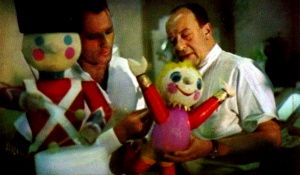 |
|
|
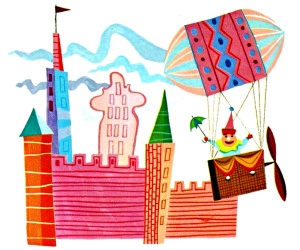
|
Drums of toy soldier band glitter with "glitter"
and sparkle with "flutter." 260 pounds of shiny material
was sprinkled on - about one pound per toy!
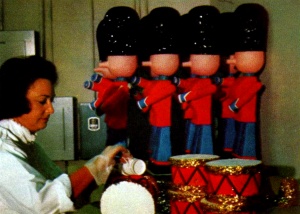 |
|
|
Royal drum and bugle corps is typical blending
of real and fantasy worlds. Disney staff studied traditions, designed
a stylized "Small World," and brought it to life with
Audio-Animatronics.
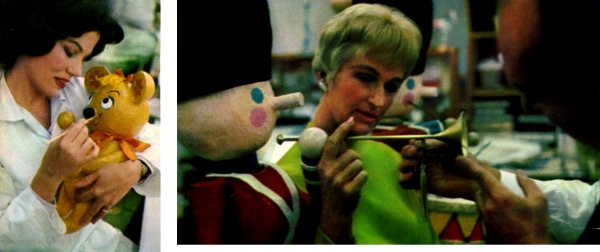 |
Ageless Arts and Space-Age Animation
|
To create the stars of this show, Walt Disney and his staff
combined such ageless skills as sculpting and costuming with
the electronic magic of the space age.
The children, animals and toys "come to life" through
a new concept in entertainment called Audio-Animatronics. It
is, literally, three-dimensional animation ... achieved by combining
and synchronizing movement with voices, music and sound effects.
Disney "imagineers" have devised complex ways to
"program" movements and record them - along with music,
singing, dialogue and sounds - on a single, one-inch magnetic
tape. In the "Small World" show, this tape has 32 "channels"
that control more than 400 separate actions!
|
|
|
When the tape "plays back" the recorded animation
and music, sound impulses activate air cylinders within the figure
... causing little children to dance the can-can, play the bagpipes
or sing in their native language.
Costumes worn by the children present a "fashion show"
of authentic attire. The wardrobe symbolizes the detailed research
that precedes design of a Disney attraction.
Once again the design starting point was the contrast between
"toys" and childlike figures. To stand out among the
highly stylized toys, children's outfits had to be realistic
and authentic. In "Small World," the authenticity includes
the very materials used for the red-black plaid of a Scottish
bagpiper.
Seamstress gathered petticoats, pleated wool skirts and sewed
every stitch of clothing -- from ponchos to little girls' panties.
Even shoes were hand-made. And each child's wardrobe has several
identical changes.
|
|
|
|
|
|
|
|
|
|
Few stage shows or movies ever presented their stars in costumes
more colorful ... or make-up more flawless. After each child
is "cast" from a plaster mould (upper left), authentic
costuming and facial features create personality and nationality.
Lace tatting and intricate embroidery are seen in dresses of
Scandinavian girls (upper right). Cleopatra, beguiling even in
childhood, gets final wardrobe check while reclining on her gold-trimmed
chaise (lower left). Indian dancer (above) receives detailed
painted "make-up," from eye-shadow to cheek rouge.
Note the round, smooth children's faces and the contrasting rough-textured
toys (above.) |
|
|
Tape machine which keeps children singing and
dancing is used on atomic submarines!
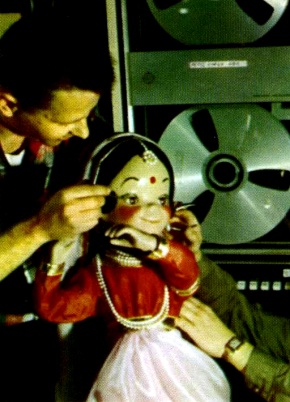 |
|
Singer's lace and braid trimmings typify costume
detail. Coronet is handmade too.
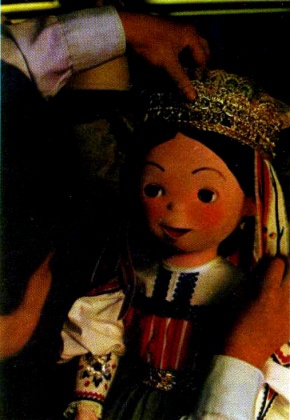 |
|
|
When fixing a belt in the African veldt, costuming
was "hazardous." Detailed research preceded design,
making every costume authentic.
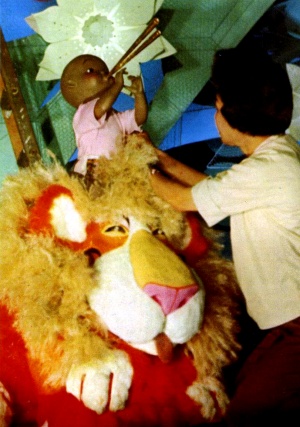 |
|
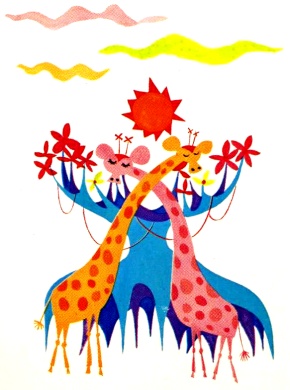 |
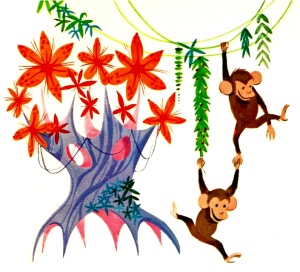
Even the hairdresser's art played a vital
role. Each child's hair was made from yarn or nylon, and "set"
in proper style, from braids to bobs. The figures above are early
prototypes.
Moods achieved through color
required coordination of background and foreground elements. Costumes,
toys and animals (like this South American jaguar) provide the
accent colors (right).
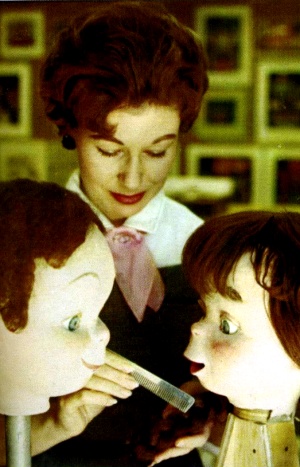 |
|
Color Styling
|
The Disney staff refers to a ride-adventure taking place "indoors,"
under controlled lighting, as a "dark ride." But "It's
a Small World" may change all that. For color has never
played a more important part in a "dark ride."
The set painter's brush and motion picture lighting techniques
combine to interpret designs by the color stylist. In "Small
Word," simplicity of color, achieved by balancing and contrasting
darks and lights, instantly changes the mood as your boat sails
'round the world.
Many colors have been used to provide a "big splash"
for the opening section, Europe. The sensation of brilliant sunshine,
a visual expression of Middle Eastern and Asian "hot countries,"
is achieved with a one-color scheme ... basically yellow.
For immediate contrast, the cool blues and greens of "Small
World's" Africa change the mood from day to night. In Latin
America, another hot land, strong, pure colors represent naive
arts and crafts. And for dramatic effect, the bright colors of
a Central American market place have been intensified ... as
a contrast to the whites and slivers that follow in the "big
fancy party," the Grand Finale.
Against these varied background, children's costumes provide
accent colors ... "cool" blues and greens in sunlit
Asia, "warm" oranges and reds in the night mood of
Africa.
|
|
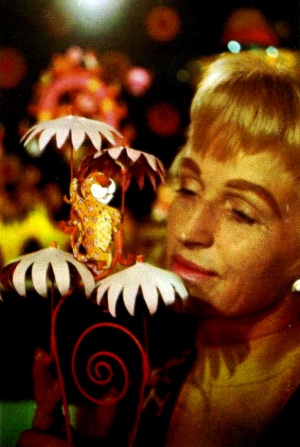 |
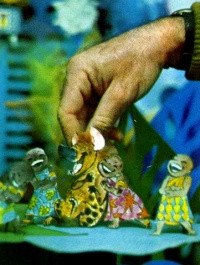 |
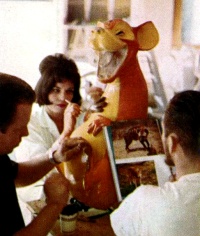 |
|
|
|
Artist paints cut-out of bird for model of
South American tropical rainforest.
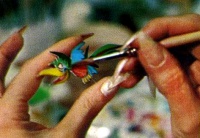 |
|
"Laugh, and The (Small) World Laughs With
You"
|
The happy hyena pictured above has been laughing through the
multiple stages of its "birth" ever since his role
in the "Small World" show was created by a storyman,
sketched by an artist and placed in position on the scale model
of Africa (upper left photo).
After the model is finalized in meetings with Walt Disney,
an animation sketch - showing the figure's movements - is made
to guide the many craftsmen who create the "character."
Then the figure is sculpted (above) in plastilene clay.
To permanently preserve the clay sculpture as accurately as
possible, it is cast in plaster as a "master pattern."
Then the final figure, made from a special hot melt vinyl, is
cast at temperatures over 300 degrees. Springs, pistons and air
cylinders, made by machinists to achieve animation, are installed
inside this vinyl "skin."
Finally (upper right photo), using photographs of hyenas as
their guide, artist-craftsmen paint on the proper colors ...
dabbing on a bit of fantasy, too.
|
|
"Flying carpet pilot" arrives for
show. It was tested on stage at Disney Studio.
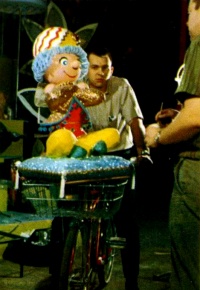 |
|
|
|
Paintings or rough sketches serve as catalysts to the imagination
of the "team." If the idea is accepted, art directors
and model makers locate the action on a scale model (center),
studying its relationship to other animation, and viewing the
entire scene in miniature as boat passengers will see it. The
"toy" youngster (upper right) is the translation of
the sketch.
The individual attention each member of the cast receives
is typified by hand painting of an Irish leprechaun (center).
And finally, hi ho, it's off they go ... not to work just
yet, but to the machine shop. They're smiling now, but the script
calls for geese to sing, or at least squawk. So it's time for
electrical wiring and a whiff of air - the combination that brings
these performers to life.
|
|
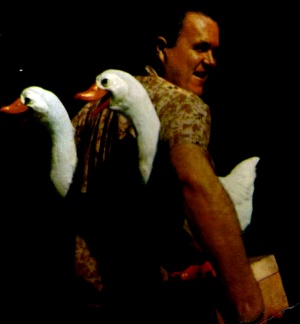
|
| SOURCE: It's A Small World
- Complete Souvenir Guide and Behind the Scenes Story ©
1964 Walt Disney Productions. All rights reserved throughout
the world. |
|